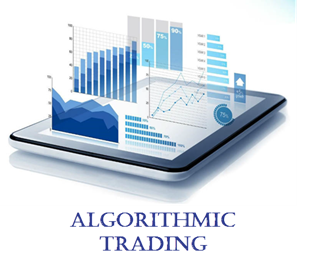Learning objectives: Identify key risks with algorithmic trading. Describe how risks associated with algorithmic trading are monitored and controlled. Explain how algorithmic trading activity is captured in banks’ risk management frameworks. Assess the effectiveness of risk management tools to monitor risks associated with algorithmic trading.

Questions:
704.1. High-frequency trading (HFT, aka, high-speed trading HST) is a type of algorithmic (aka, algo) trading and is now a well-known feature of the global market landscape. In many markets, a small number of firms may account for a large proportion of trading volume. The Senior Supervisors Group (SSG) considers each of the following a key risk of algorithmic trading EXCEPT which is false?
a. Intraday exposure at trading desks
b. Systemic instability via cascading error
c. Internal controls outpaced by speed and complexity
d. Liquidity withdrawal risk due to stacking passive orders
704.2. Which of the following is a recommendation meant to REDUCE the risk that an erroneous or destabilizing order will reach financial markets?
a. Quote stuffing
b. Defense-in-depth
c. Expiring alpha collar
d. Difference-in-difference testing
704.3. Which of the following is a TRUE as a recommendation that is given by the SSG in regard to controlling or managing the risks created by algorithmic trading?
a. The board and executive-level risk committees should be informed of the level of risk taken intraday across the firm
b. If a near-miss does not incur any financial loss, then it should not be reported because this unduly consumes resources
c. Traders should develop their own algorithms, developers should test their own code and developers should deploy their own code into production.
d. Control-related functions (e.g., technology, operations management, compliance) should not be able to provide input, influence, or otherwise bias front-office controls
Answers here:

Questions:
704.1. High-frequency trading (HFT, aka, high-speed trading HST) is a type of algorithmic (aka, algo) trading and is now a well-known feature of the global market landscape. In many markets, a small number of firms may account for a large proportion of trading volume. The Senior Supervisors Group (SSG) considers each of the following a key risk of algorithmic trading EXCEPT which is false?
a. Intraday exposure at trading desks
b. Systemic instability via cascading error
c. Internal controls outpaced by speed and complexity
d. Liquidity withdrawal risk due to stacking passive orders
704.2. Which of the following is a recommendation meant to REDUCE the risk that an erroneous or destabilizing order will reach financial markets?
a. Quote stuffing
b. Defense-in-depth
c. Expiring alpha collar
d. Difference-in-difference testing
704.3. Which of the following is a TRUE as a recommendation that is given by the SSG in regard to controlling or managing the risks created by algorithmic trading?
a. The board and executive-level risk committees should be informed of the level of risk taken intraday across the firm
b. If a near-miss does not incur any financial loss, then it should not be reported because this unduly consumes resources
c. Traders should develop their own algorithms, developers should test their own code and developers should deploy their own code into production.
d. Control-related functions (e.g., technology, operations management, compliance) should not be able to provide input, influence, or otherwise bias front-office controls
Answers here:

